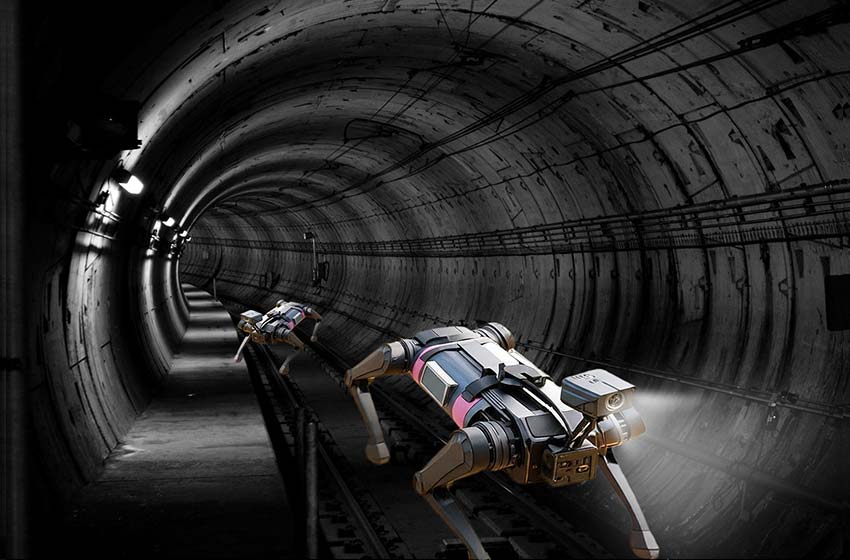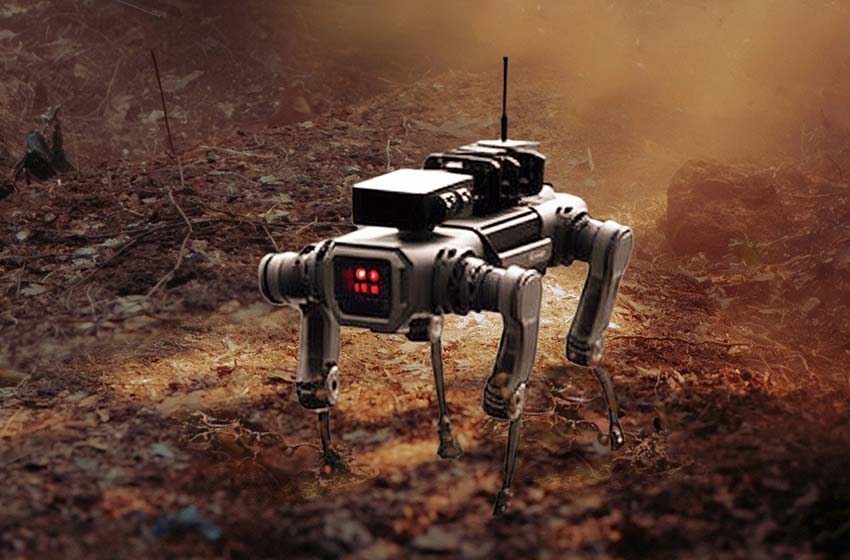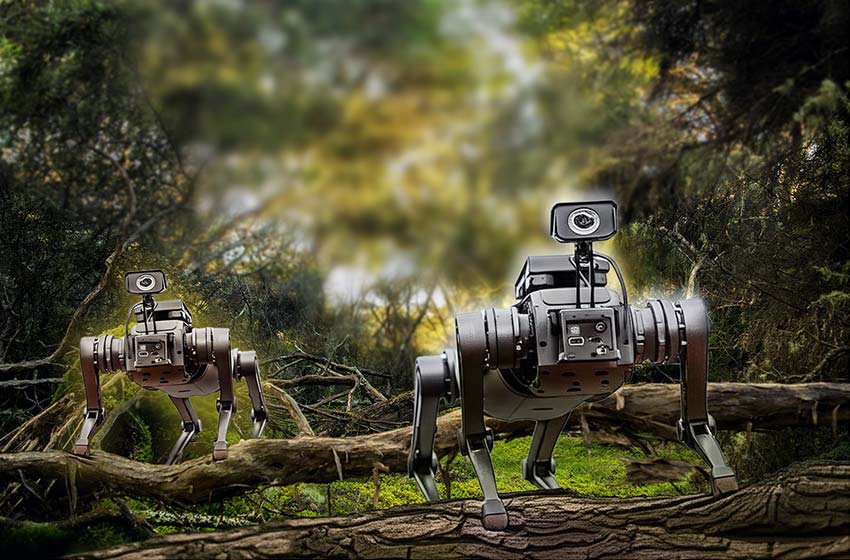Overview
Robotic hounds are transforming modern defense by providing unmatched mobility, versatility, and safety in challenging environments. Unlike wheeled or tracked systems, these legged robots can traverse rugged terrain, climb stairs, crawl through debris, and navigate confined or obstacle-laden spaces, ideal for complex or unpredictable battlefield conditions.
In reconnaissance roles, robotic hounds can scout ahead in hostile or unknown environments, transmitting real-time video and sensor data back to command units without risking soldier lives. Their low profile and quiet operation make them suitable for stealth missions and urban warfare scenarios.
They also serve as autonomous load carriers, transporting supplies such as ammunition, medical kits, or communication equipment across difficult terrain that would be inaccessible to conventional vehicles. This reduces the physical burden on troops and increases operational efficiency during extended missions.



Equipped with advanced sensors and mapping systems, robotic hounds can create detailed 3D geo-maps of unfamiliar or hostile territory. These maps enhance situational awareness, support mission planning, and help identify threats or safe pathways in real time.
By replacing human presence in high-risk zones, robotic hounds keep soldiers off the front lines and out of immediate danger. Whether used for surveillance, logistics, mapping, or perimeter patrol, these autonomous systems act as force multipliers, enhancing mission capability while minimizing human exposure to harm.
As militaries continue to prioritize unmanned solutions, robotic hounds stand out as a key innovation in the evolution of safer, smarter defense operations.
Challenges

Deploying an edge AI computer in a robotic hound for defense operations poses several challenges. The system must be compact to fit within the hound’s narrow, elongated body, leaving limited space for components and airflow. Despite its small form factor, the computer must deliver real-time AI inference capabilities to support tasks such as object detection, navigation, and terrain analysis.
Power efficiency is critical, as the robot often relies solely on battery power during missions. The onboard computer must balance high-performance processing with low energy consumption to maximize operational uptime in the field.
Robustness is equally essential. In dynamic defense scenarios, the robotic hound is exposed to constant multi-axis shock and vibration, particularly when running, climbing, or traversing rough terrain. These conditions place stress on internal electronics, increasing the risk of connector fatigue or component failure over time.
Environmental durability is another key requirement. The computer must withstand extreme weather such as intense heat, rain, humidity, and airborne dust without active cooling systems like fans. A rugged, fanless design with high thermal efficiency is critical to maintain stable performance in harsh conditions.
Additionally, limited internal space restricts the number of native I/O interfaces. Yet the system must still support a variety of sensors, cameras, and communication modules, making high integration flexibility essential without adding excessive weight or complexity.
Solution
Neousys NRU series edge AI computers, powered by NVIDIA® Jetson™ platforms, are perfect for integration into robotic hounds supporting defense operations. Compact yet powerful, NRU systems offer up to 100 TOPS of AI performance, enabling real-time inference for tasks such as surveillance, reconnaissance, terrain mapping, and object detection, all essential for mission-critical decision-making in the field.
What sets the NRU series apart is its native support for GMSL2 and PoE connectivity. GMSL2 ports enable high-speed, low-latency video streaming from multiple high-resolution cameras, including RGB, thermal, infrared, or LiDAR, using lightweight coaxial cables—perfect for panoramic situational awareness. PoE ports simplify system architecture by allowing power and data transmission over a single cable to external devices like IP cameras or edge sensors, reducing wiring complexity and overall weight.
Designed for harsh environments, NRU platforms are compliant with various shock and vibration resistance standards up to MIL-STD-810G/H and EN 50155. These systems can withstand continuous multi-axis shock, vibration, and exposure to dust, heat, or moisture, conditions that robotic hounds routinely encounter when deployed across rugged or hostile terrain.
The NRU series also supports wireless communication modules such as 5G, 4G LTE, or WiFi, enabling live video transmission and remote command control. Additionally, they support a wide input voltage range to accommodate various battery packs, ensuring reliable power management during operations.
With rugged durability, efficient power usage, flexible I/O, and powerful onboard AI, Neousys NRU Jetson platforms provide a reliable, field-proven edge AI computing for robotic hounds, enhancing defense capabilities while keeping personnel out of harm’s way.
- Learn more about Neousys NRU series NVIDIA® Jetson™ Rugged Computers: https://www.neousys-tech.com/en/product/product-lines/edge-ai-gpu-computing/nvidia-jetson


